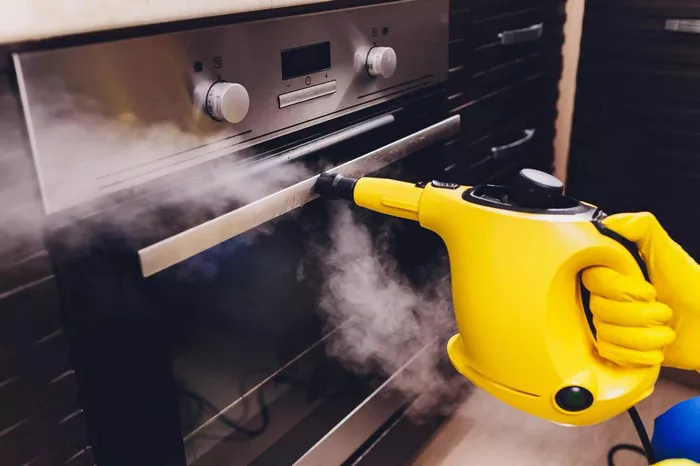Steam cleaning has gained popularity as an eco-friendly and efficient method for cleaning various surfaces, from carpets to upholstery to kitchen appliances. While it offers numerous benefits, it’s crucial to recognize that like any cleaning method, steam cleaning also has its drawbacks. Understanding these disadvantages can help individuals make informed decisions about whether steam cleaning is the right choice for their cleaning needs.
Cost and Initial Investment
One of the primary disadvantages of steam cleaning is the initial investment cost. Steam cleaners can be expensive to purchase or rent compared to traditional cleaning methods. Quality steam cleaners equipped with advanced features such as higher pressure and adjustable temperature settings tend to come with a higher price tag. Additionally, the cost of maintaining and servicing steam cleaning equipment should be considered. Regular maintenance, including descaling and replacing parts, can incur additional expenses over time.
Time and Labor Intensiveness
While steam cleaning is effective in removing dirt, grime, and stains, it can be more time-consuming and labor-intensive compared to other cleaning methods. Proper steam cleaning requires thorough preparation, including vacuuming and pre-treating stains, which adds to the overall cleaning time. Moreover, the process of maneuvering the steam cleaner over surfaces and waiting for them to dry afterward can prolong the cleaning process, especially in larger areas or heavily soiled environments.
Limited Effectiveness on Certain Surfaces and Materials
Although steam cleaning is versatile and can be used on a wide range of surfaces, it may not be suitable for all materials. Steam can cause damage to delicate fabrics, such as silk or velvet, and certain types of hardwood floors. Additionally, porous surfaces like unsealed grout or unfinished wood may absorb excess moisture from steam, leading to warping, swelling, or discoloration over time. It’s essential to carefully assess the material compatibility and manufacturer’s recommendations before using steam cleaning on surfaces to prevent damage.
Risk of Burns and Scalds
Steam cleaning involves handling equipment that emits hot steam at high temperatures, which poses a risk of burns and scalds if not used properly. Direct contact with the steam or hot surfaces of the cleaning equipment can cause skin irritation, blisters, or more severe burns. It’s crucial to follow safety precautions provided by the manufacturer, such as wearing protective gloves and keeping a safe distance from the steam outlet during operation. Additionally, ensuring proper ventilation in the cleaning area can help dissipate steam and reduce the risk of accidental burns.
Environmental Considerations
While steam cleaning is often promoted as an eco-friendly cleaning solution due to its reliance on water vapor and minimal use of chemicals, there are environmental considerations to be aware of. The electricity required to heat water and power steam cleaning equipment contributes to energy consumption and carbon emissions, particularly if the electricity is generated from non-renewable sources. Additionally, the disposal of wastewater generated during the steam cleaning process, which may contain contaminants and pollutants removed from surfaces, requires proper management to prevent environmental harm.
Conclusion
While steam cleaning offers numerous advantages in terms of effectiveness and environmental friendliness, it’s essential to acknowledge its disadvantages as well. The initial investment cost, time and labor intensiveness, limited effectiveness on certain surfaces, risk of burns, and environmental considerations are factors to consider when deciding whether steam cleaning is the right cleaning method for specific applications. By understanding these drawbacks and taking appropriate precautions, individuals can make informed decisions to achieve optimal cleaning results while minimizing potential risks and challenges.
FAQs
Q1: Can steam cleaning damage hardwood floors?
A1: Yes, steam cleaning can potentially damage hardwood floors, especially if they are not sealed properly or are of poor quality. The excessive moisture from steam can cause warping, swelling, or discoloration of hardwood floors. It’s advisable to consult with flooring manufacturers and test steam cleaning in inconspicuous areas before applying it to the entire floor.
Q2: Is steam cleaning safe for all types of upholstery?
A2: No, steam cleaning may not be suitable for all types of upholstery. Delicate fabrics like silk or velvet can be damaged by the heat and moisture from steam. It’s essential to check the manufacturer’s recommendations and conduct a spot test in an inconspicuous area before steam cleaning upholstery to avoid potential damage.
Q3: How often should I descale my steam cleaner?
A3: The frequency of descaling your steam cleaner depends on various factors such as water hardness, frequency of use, and the manufacturer’s recommendations. Generally, it’s recommended to descale your steam cleaner every 3 to 6 months to prevent mineral buildup and ensure optimal performance. Use descaling solutions specifically designed for steam cleaners and follow the manufacturer’s instructions for descaling procedures.

